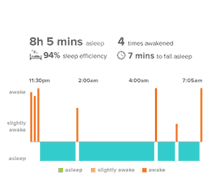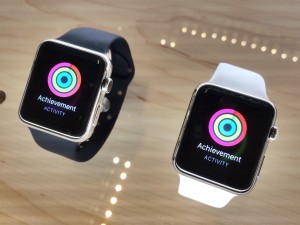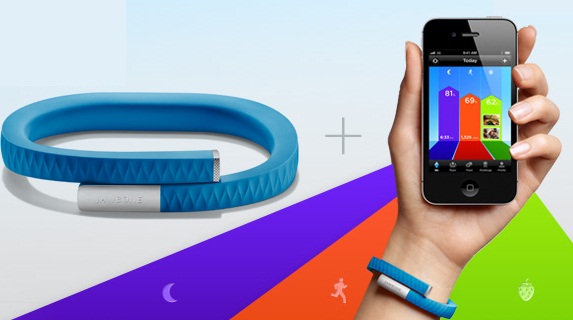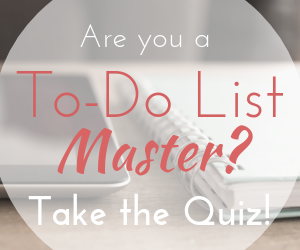Fitbits, Up bands, and now Apple watches… we are all becoming more comfortable with wearable technology. Having “lived the Up life” for a while myself I’ve discovered the benefits personally and particularly in terms of my productivity, which inspired me to share these insights with you all.
What do these little fitness tracking devices have to do with productivity you may ask? Specifically, they are great for helping you improve your physical energy management. Physical energy management is focused (rather obviously) on how we take care of our bodies in order to allow ourselves to be more energized and effective.
There are four key factors in physical energy management: sleep, exercise, rest breaks, and food/water. Delightfully, most of the popular wearable tech devices have the ability to help you with at least 3 of these factors. I wish one of these devices would be able to take a picture of my plate and give me data on how “good or bad” my food choices are for each meal to keep me “honest.” But, other than possibly giving you a place to log what you eat that one is the exception.
Let’s look at the three aspects that it can help you improve:
Sleep
Ah, my personal favorite… I love sleep. In fact, I do everything I can to make sure that I get my 8-9 hours each day. Why? Because I can definitely tell when I haven’t slept enough. I feel more sluggish, or I have to adrenalize myself to stay fully engaged, which is much harder for my body. According to the National Sleep Foundation, most adults need 7-9 hours each night, however most of us are getting woefully less than that, clocking in a barely more than 6 hours on average.
For me, this was one of the most exciting features of my Up band because, first of all, it tracked when I fell asleep each night and woke up each morning. So I had data that allowed me to become aware of how differently I felt on 6 hours versus 7, 8, or 9 hours of sleep. It became so much easier to notice the patterns that days when I had less than 8 hours of sleep were often harder for me energetically. That’s part of what allowed me to gain the clarity I mentioned above and start intentionally making sleep a priority.
 However, an unexpected additional blessing was that my Up band also measured how long I spent in deep vs light sleep. This information provided an additional layer of data that was truly fascinating. I remember talking with one of my executive clients a year or so ago (she had turned me on to the Up Band originally). She commented how she had noticed a pattern for herself. The amount of time she slept wasn’t enough, she also needed to log at least 3 or more hours of deep sleep to feel fully rested. So, I began to watch those cycles as well, and I found that overall the same was true for me too. In other words simply getting sleep wasn’t good enough; I had to have enough deep sleep too.
However, an unexpected additional blessing was that my Up band also measured how long I spent in deep vs light sleep. This information provided an additional layer of data that was truly fascinating. I remember talking with one of my executive clients a year or so ago (she had turned me on to the Up Band originally). She commented how she had noticed a pattern for herself. The amount of time she slept wasn’t enough, she also needed to log at least 3 or more hours of deep sleep to feel fully rested. So, I began to watch those cycles as well, and I found that overall the same was true for me too. In other words simply getting sleep wasn’t good enough; I had to have enough deep sleep too.
I was fascinated to notice how after a couple days of only 6 hours sleep due to travel or conferences I would begin to feel sluggish or get that sense of adrenalizing myself through the day. Then, would come the night when I could “catch up” on some sleep, and almost invariably in the morning I would see that I spent most of the night in deep sleep. Sometimes up to 6 or more hours would be logged on my app, which gave me a whole new understanding of the phrase to “sleep like the dead.” Almost unfailingly I would feel much better on waking that morning too.
Exercise
This is the aspect that most people focus on when they think about or purchase a wearable tech device. “It will help me track my steps,” or “I use it to log my runs,” are the common refrains. Therefore, it obviously helps keep us honest about how much activity (or inactivity) we’re getting during our days. I certainly saw what a big difference was made between the days when I just worked for home and didn’t go out (less than 3000 steps) versus the days when I at least took a long walk around town or by the ocean (anywhere from 8000-12,000).
![]() The real surprise however was when we saw how much exercise my husband Brian was getting on a daily basis. While he’s a techie guy who spends most of his day in front of a computer, he walks every day from home to the train station and from the train station to work. I think we were both impressed to recognize that he logged 12,000+ steps just with those four walks (either side of the train ride in the AM and PM). While it’s probably not consistently a cardio pace of walking (unless he’s running late), that’s still a decent amount of activity for a largely sedentary job.
The real surprise however was when we saw how much exercise my husband Brian was getting on a daily basis. While he’s a techie guy who spends most of his day in front of a computer, he walks every day from home to the train station and from the train station to work. I think we were both impressed to recognize that he logged 12,000+ steps just with those four walks (either side of the train ride in the AM and PM). While it’s probably not consistently a cardio pace of walking (unless he’s running late), that’s still a decent amount of activity for a largely sedentary job.
Some of our highest step days were on our honeymoon when we were traveling in Italy because we were literally walking everywhere and spending most of the day touring museums, palaces, and gardens. Those days we were averaging around 20,000 steps, and while I know my knees got a bit sore, they were some of the happiest days of my life. I can’t wait to go back.
Breaks
The somewhat less obvious benefit of most of these wearable tech devices is their ability to nudge you when you’ve been holding still for too long. Taking regular brain breaks throughout your day is a key factor in improving your physical and your mental energy management. Giving your body a chance to move and shift position helps your organs and muscles to function better overall. And giving yourself the chance to shift your gaze and mental awareness away from your computer screen even for a few minutes allows your mind a well-needed rest as well. I wrote a post a few months ago offering some great brain break ideas that you might want to review to inspire your next brain break.
 Most of the new wearable tech devices have the ability to provide some kind of activity alarm that will either buzz or beep to let you know when you’ve been sedentary for a specified period of time. I like to make sure that I’m getting a decent brain break at least every 90 minutes because that coincides with what scientists call our “ultradian” cycles.
Most of the new wearable tech devices have the ability to provide some kind of activity alarm that will either buzz or beep to let you know when you’ve been sedentary for a specified period of time. I like to make sure that I’m getting a decent brain break at least every 90 minutes because that coincides with what scientists call our “ultradian” cycles.
Most of us have heard of circadian cycles in which our internal clock is set to wake, be alert, and sleep as one flowing wave through each 24 hour day. However, less well known are the ultradian cycles which Loehr and Schwartz call our “Daily Pulse.” Basically, according to different studies most adults can rarely focus for more than 90 minutes to 2 hours at a time without requiring a brain break.
That’s where wearable tech can yet again come to the rescue to keep us “honest.” That little nudge from your device to pause and take a brain break, stretch, or refill your water bottle will actually allow you just enough recuperation time to be ready to power through the next 90-minute cycle if necessary. Thus, it’s actually giving you highly valuable support to increase your overall productivity through regular rest breaks.
Next Steps
 While I’m sad to say that my Up band died a permanent death a few months ago, I am eagerly looking forward to picking up an Apple watch as its replacement. I’ve already chosen the one that I want, but I’ve decided to make it a business reward for achieving a specific next goal. (They are kinda pricey after all *smile*)
While I’m sad to say that my Up band died a permanent death a few months ago, I am eagerly looking forward to picking up an Apple watch as its replacement. I’ve already chosen the one that I want, but I’ve decided to make it a business reward for achieving a specific next goal. (They are kinda pricey after all *smile*)
Do you use a wearable tech device? What do you love most about it? Have you noticed any changes in your decision-making that’s improved your energy management since you started using it? I would love to hear more about your experiences in the comments below.
If you haven’t yet picked one up, then what aspect do you think would make the biggest difference to your life? I hope this post gives you some useful insights into the very real productivity gains to be made when you have just a little bit more help and data.
Images:



